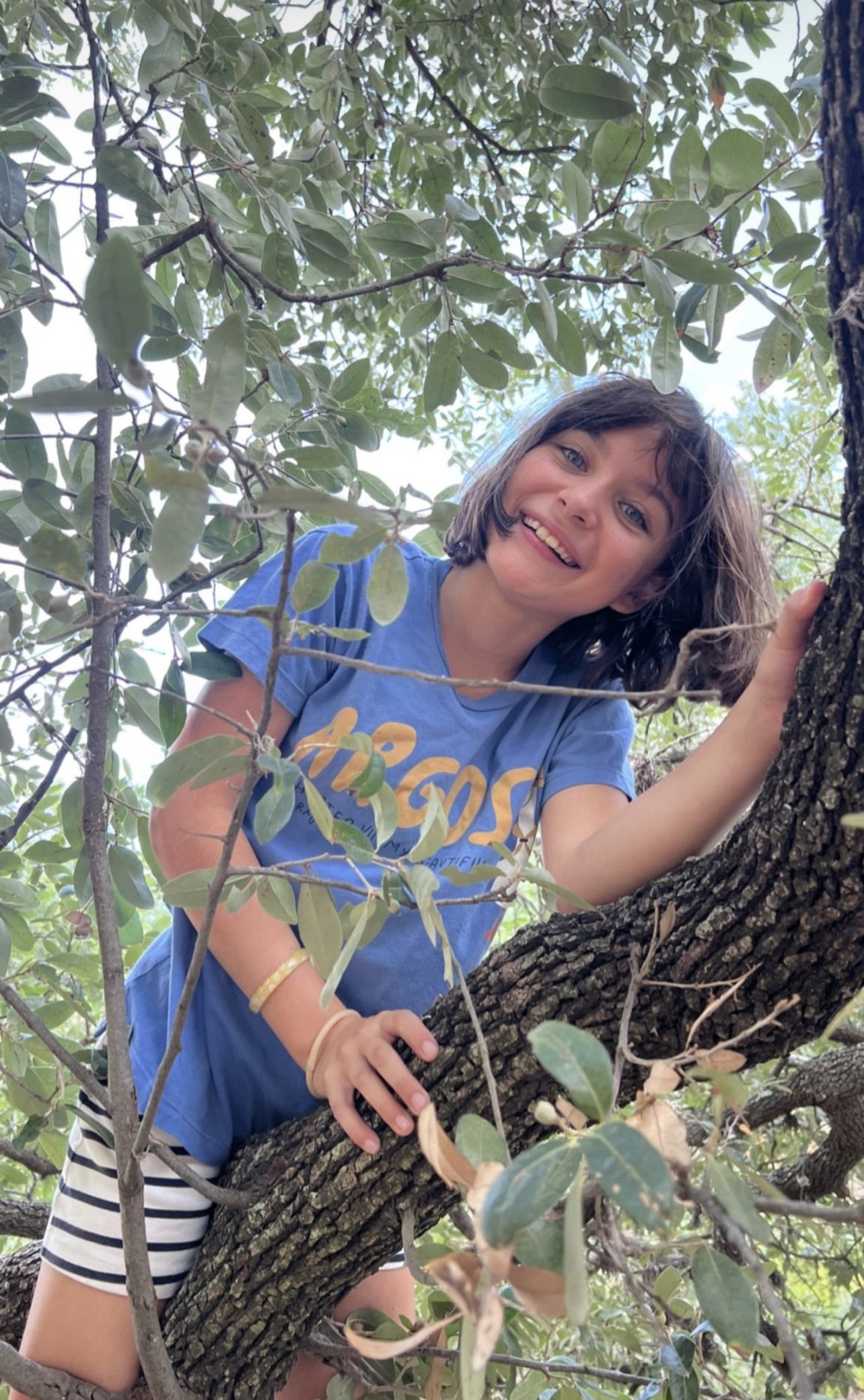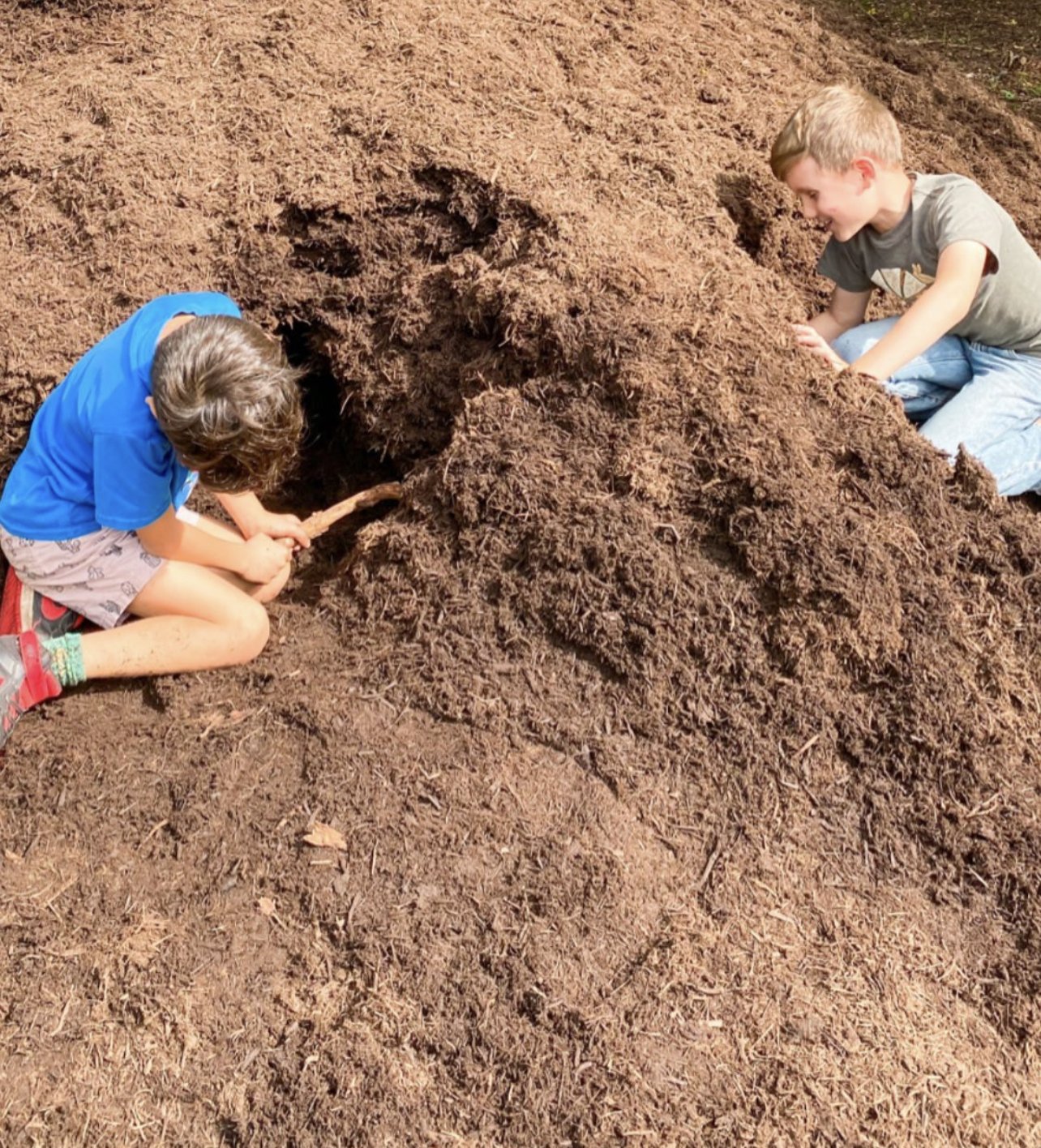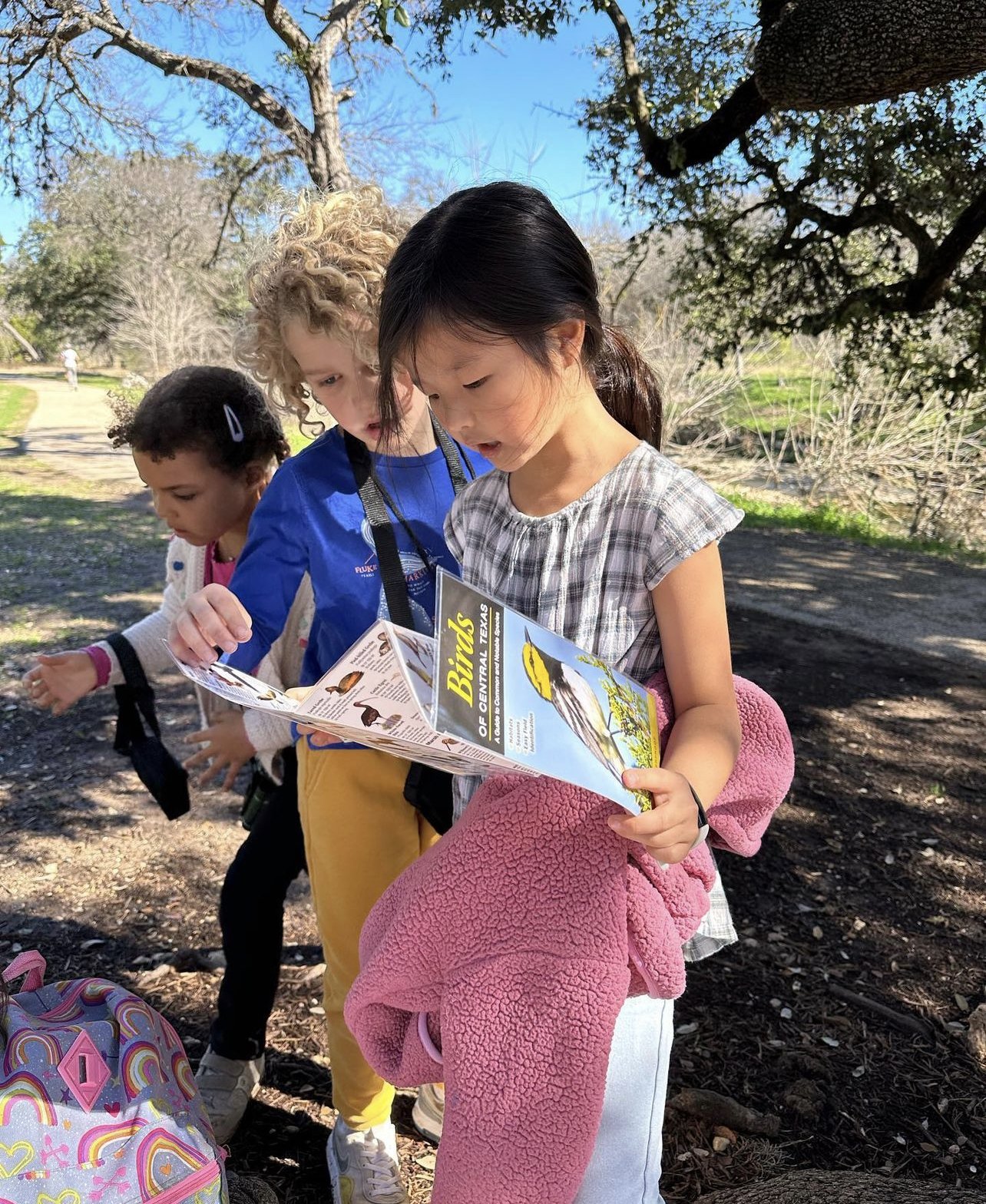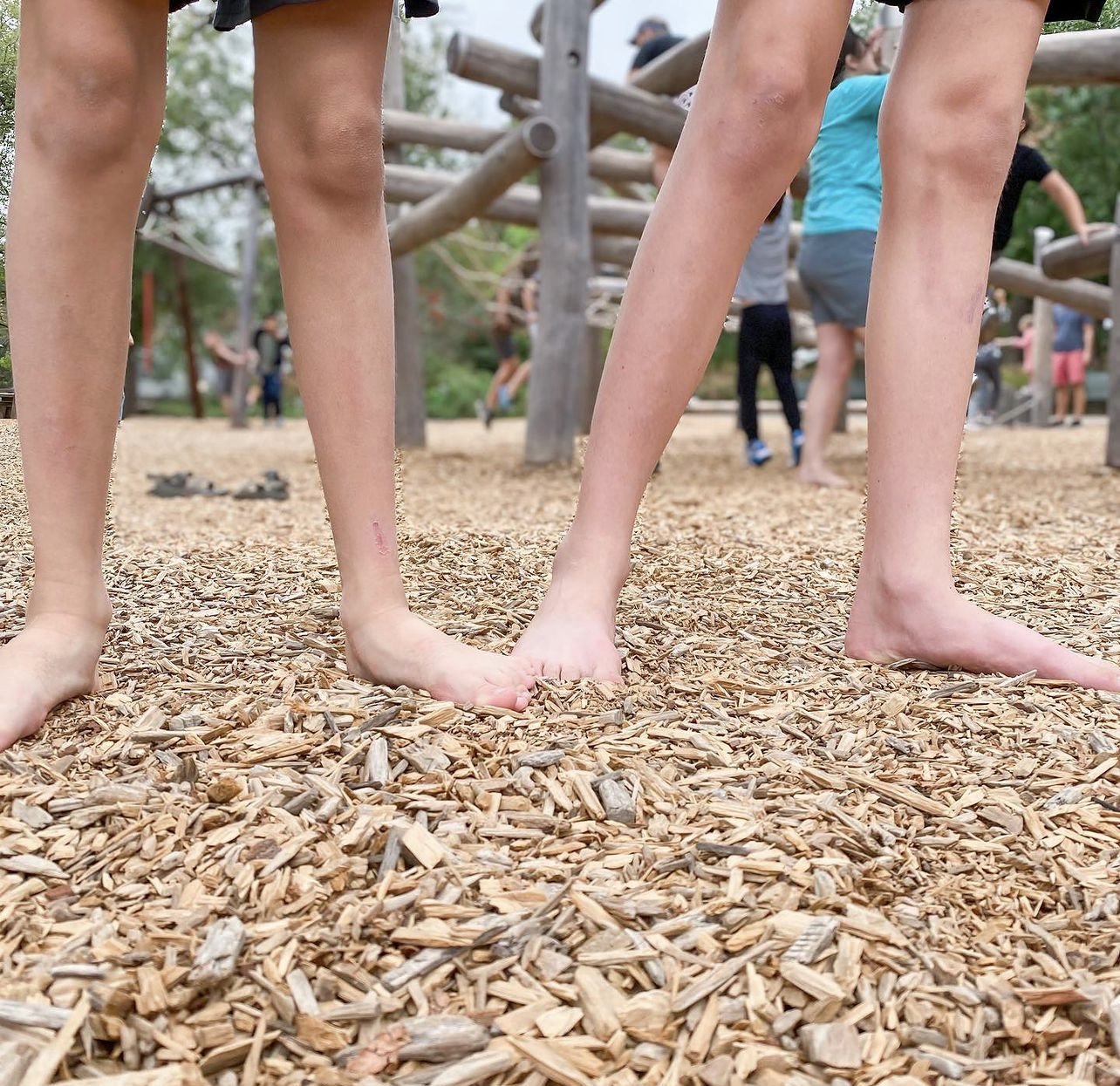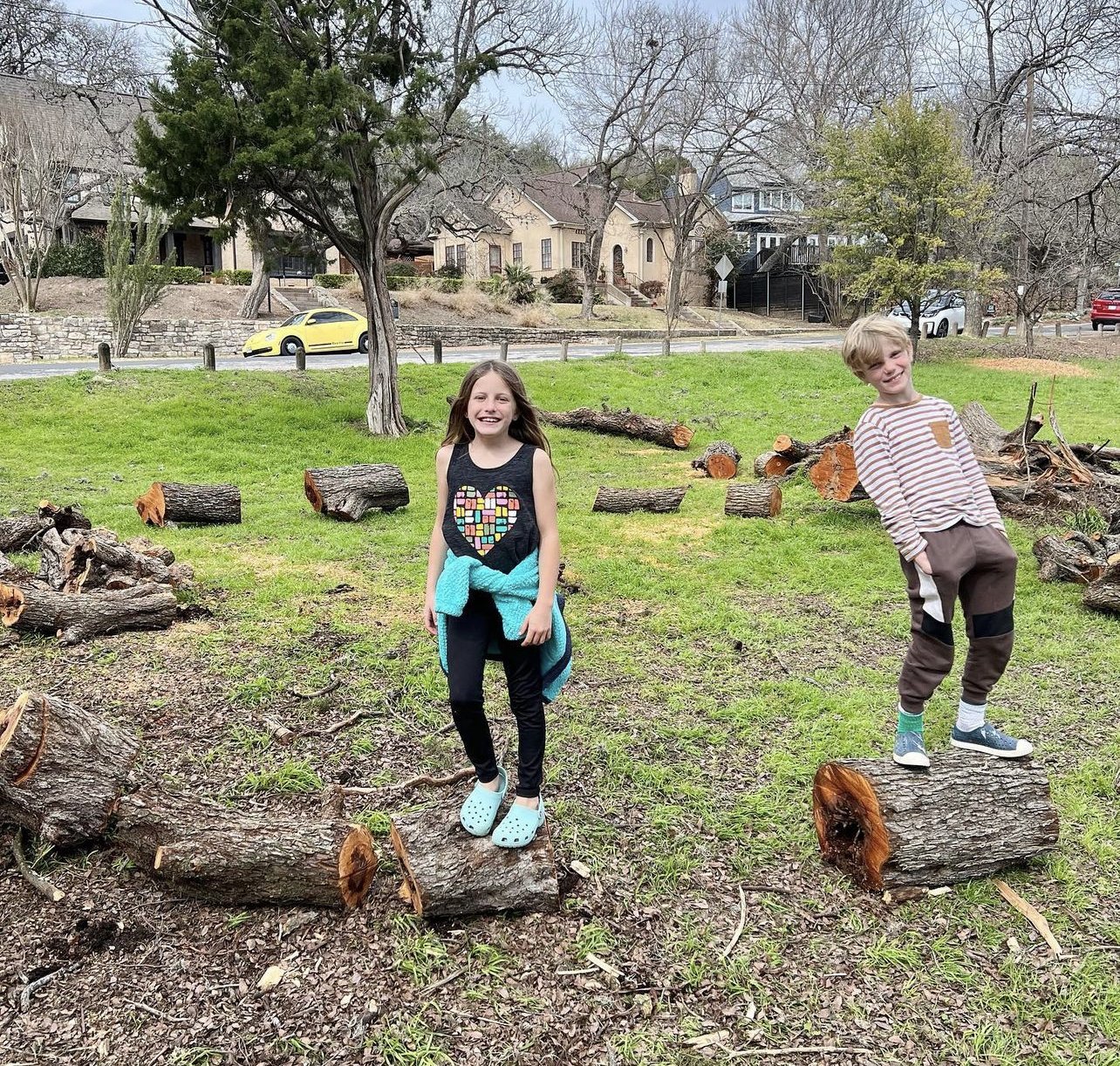A Tapestry of Play: A Glimpse into Long-View Micro School's Approach to Nurturing Growth Through Physical Play
The midpoint of our day at Long-View is the hour we spend at Pease Park, just an 8-minute walk down the road. But this isn’t just “a break” or “recess.” Congruent with the rest of our school day, it is an intentionally designed time to provide rich experiences for our learners.
Since the founding of the school nearly ten years ago, we have recognized the importance of unstructured free play and reflected on the value of this time. Live Oak Meadow at Pease Park is the stage where different forms of play unfold organically, contributing to the rich experiences that define our school. Learners play and interact in ways that they choose; adults are mindfully observant but not controlling or “managing” behavior. Opportunities for creating games and facilitating other positive forms of engagement or play are plentiful. And thus, so is the opportunity for learners to increase their understanding of conflict and practice effective resolution of conflict. During this time in nature, children can also feel calm, soaking up the proven stress relief that nature brings, and improve their senses as well as develop important sensory integration. As learners run through the park or climb trees, they exercise and develop strong muscles and bones needed for stability, injury prevention, endurance, and strength. Importantly, children can practice assessing their environment and assessing risk. We know evaluating risks and taking challenges at their own pace helps children build confidence and learn to be adaptable.
The variety of opportunities at the park is mirrored in the variety of choices our children make during their time at park, and these choices weave a dynamic tapestry of play, ever-changing based on seasons and the interests of our learners. For example, this fall, Live Oak Meadow became soccer “stadium,” only to seamlessly transition one day to the spirited energy of a football game. We've witnessed the creek transform into a stage for imaginative adventures and into a mine for clay traded within an economic structure we were not privy to. And during last year's ornithology unit in two of the bands’ science classes, birdwatching became a delightful park activity and the bucket of fishing nets that is often carried to the park was replaced by a field bag filled with binoculars. Thus, at Long-View we understand that play is not static; it's a living entity that adapts, evolves, and mirrors the diverse interests of our students.
Right now, one thread in this rich tapestry of play is physical play. Learners can be observed chasing each other, pushing, grabbing, smiling, jumping on each other, and falling down. And we believe in the power of physical play, often referred to as "rough and tumble play" or "big body play." Recently Live Oak Meadow suddenly inherited a large pile of mulch. Well, to adult eyes it looks like a pile of mulch, but to our kids playing in Live Oak Meadow, the pile of mulch was a mountain to be climbed or a fort to be defended. While physical play was always an option, this mulch pile has inspired daily physical adventures for our children, and these adventures have been messy, not just because of the dirt involved.
As children push their way to the top of the mulch pile or team up to playfully tackle a child twice their size, we are reminded of the complexity physical play brings for the children involved, and also for the adults supervising them. Physical play is a complex yet essential component of childhood. Physical play encompasses a spectrum of activities, from gentle physical contact to more vigorous, seemingly aggressive behaviors, all within a playful context of which children are choosing to engage. And for a school that values student choice and agency, we feel it would be wrong to take this choice away from our learners, despite the complexities for the adults.
At Long-View, we embrace this complexity, recognizing that within this spectrum lies a multitude of opportunities for growth and learning. Research consistently underlines the profound benefits of physical play in children’s development and learning, especially in the elementary and middle school years. From enhancing physical health and development to fostering social competencies and regulating aggression, the positive impact of physical play is undeniable.
Our approach to physical play is embedded in our philosophy of education. While it might be tempting to set rules to streamline play for cleanliness and safety, we recognize the missed learning opportunities in such constraints. Instead, we encourage our children to navigate the complexities of free and unstructured play, all while we, the adults, intentionally observe and provide coaching, only if necessary.
At Long-View Micro School, we work hard to cultivate well-rounded individuals prepared for the challenges of the world, and we celebrate the diversity of play, recognizing that rough and tumble play is just one thread in this tapestry of play available to our students. Our commitment to embracing physical play is not just about fostering physical activity; it's about nurturing the social, emotional, and cognitive foundations that shape resilient, creative, confident and socially adept individuals.


